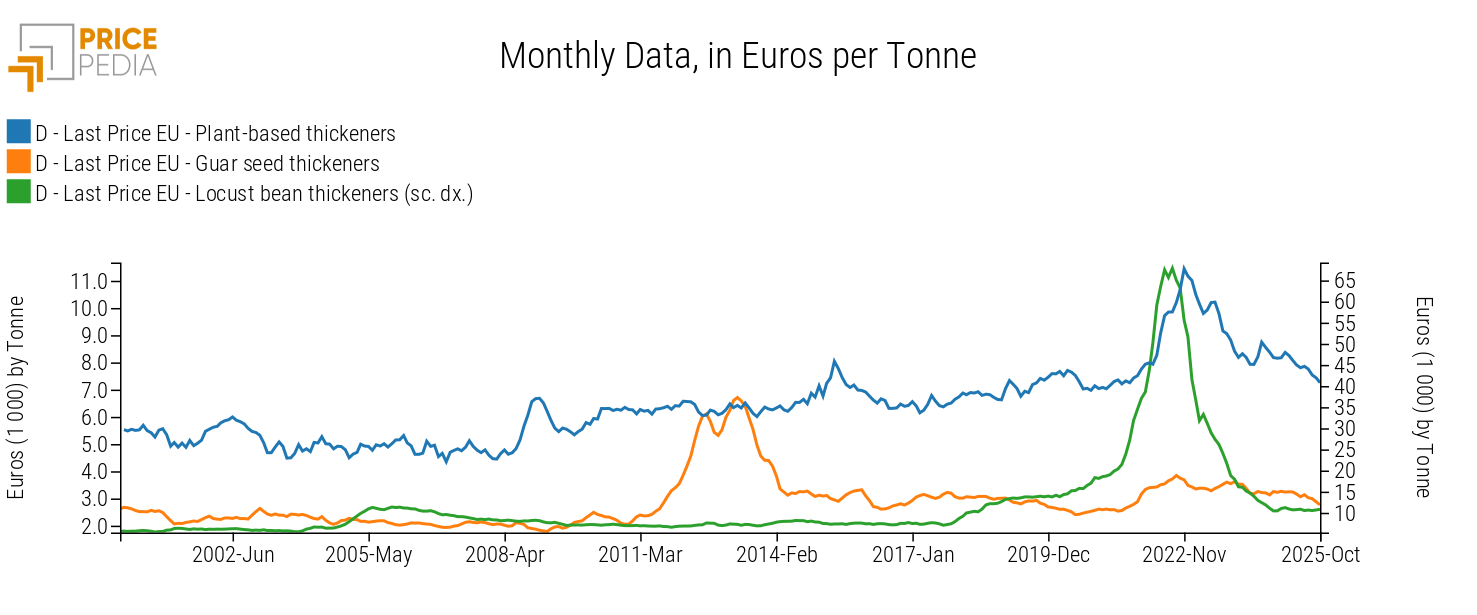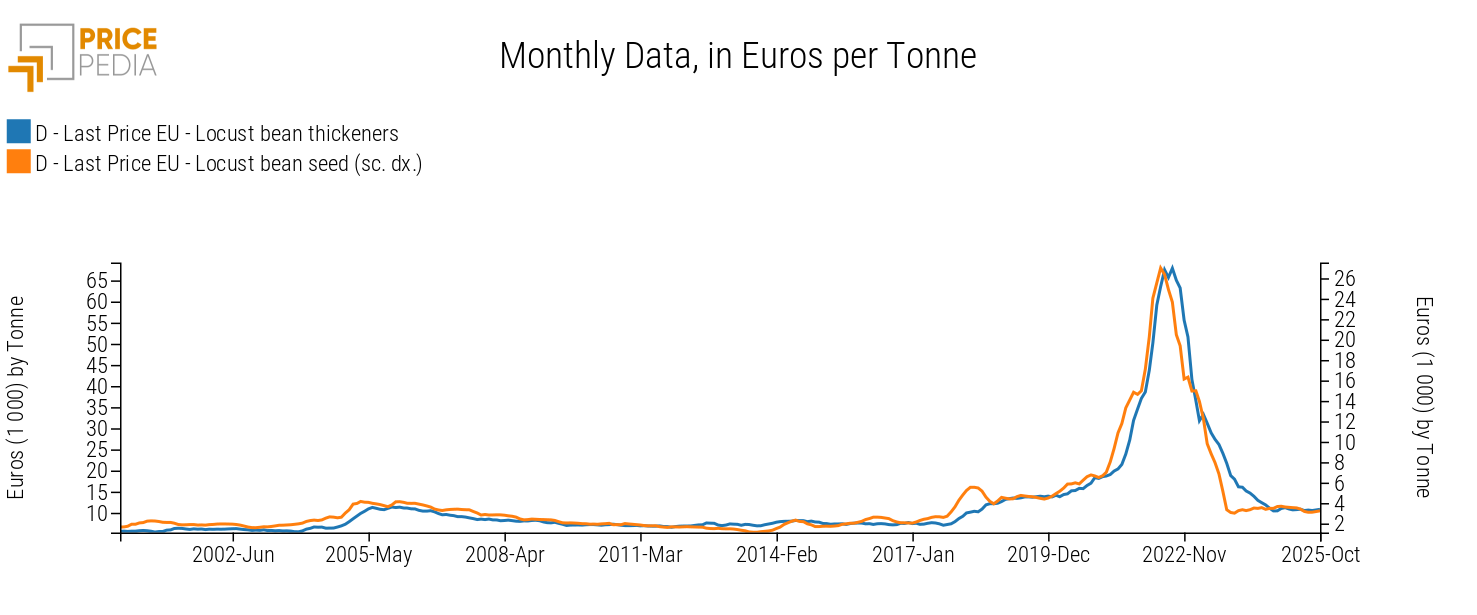Prices of plant-based thickeners in Europe
Diverging dynamics characterize the category's price trends
Published by Pasquale Marzano. .
Food Price Drivers
Thickeners are an essential category for several industrial sectors, particularly the food industry, as they allow the viscosity of a liquid or mixture to be modified without significantly altering its other chemical properties. ome of the most commonly used thickeners include guar seed thickeners (guar gum), locust bean thickeners (also known as locust bean gum or LBG), tara gum, carrageenan, and others
The specific characteristics of these products, often used in combination, make them highly differentiated, with applications that can vary significantly from product to product. As a result, they are not perfectly substitutable for one another:
- Locust bean thickeners require high-temperature hydration and produce a creamy texture; they are used in ice cream production, spreadable cheeses, and long-cooked desserts, often in combination with carrageenan;
- Guar seed thickeners hydrate quickly in cold water and generate high viscosity in instant solutions; they are used in gluten-free bakery products, powdered beverages, and soluble mixes;
- Other plant-based thickeners cover a broad segment ranging from carrageenan's gelification capabilities to the cold-viscosity properties of tara gum and other gums.
These characteristics contribute to the fact that thickener prices often show different dynamics and levels.
The chart below compares EU customs prices for locust bean thickeners (right-hand axis), guar gum, and other plant-based thickeners, expressed in euros per ton.
European prices of plant-based thickeners, in Euro per Ton

The chart highlights different dynamics and price levels, in line with the distinct characteristics of each product.
Guar seed thickeners is positioned at a lower price level than the others, although with some periods of strong fluctuations. Specifically, between 2012 and 2013, prices more than doubled compared to 2011; in 2014, prices were halved relative to the peaks recorded a few months earlier, although they stabilized at levels slightly higher than the average of the previous decade. In 2022, further increases were recorded, more “normal” ones (+32% compared to the 2021 average), considering the volatility observed in the previous decade.
A similar magnitude of growth affected the price of other plant-based thickeners in the same period, rising by +30.5% in 2022 year-on-year, starting from a significantly higher price level. Unlike guar gum, however, these products experienced a gradual increase over the previous twenty years.
Turning to locust bean thickeners, its price has historically been higher than that of the other products and has undergone numerous cycles of increases over the past 25 years. One such episode occurred in 2005, when prices rose by about +60% compared to the previous year's average. In the following years, prices gradually declined but never returned to pre-2005 levels.
Another phase of sharp increases occurred between 2018 and 2020. This time, however, no stabilization followed; instead, even more intense increases occurred, culminating in 2022 at over 57,000 euros per ton, up +138% from the previous year.
Since 2022, prices have followed a downward trend, recently stabilizing below 11,000 euros per ton.
Locust Bean Gum: Comparison with Raw Material Prices
Comparing finished-product prices with those of the raw material reveals a strong relationship between locust bean thickeners and carob seeds.
The chart below shows the prices of both products in euros per ton, plotted on two separate axes.
Comparison between prices: locust bean seeds (right axis) vs. locust bean thickeners, in Euro per Ton

The comparison shows that locust bean thickeners prices are strongly linked to the cost of the raw material. Prices are in fact driven by carob seed prices, which typically anticipate thickeners price movements by around two months.
Conclusions
The category of plant-based thickeners comprises products with heterogeneous price dynamics, often driven by their functional characteristics in end-use applications as well as the cost of the underlying raw materials.
For industrial users, it becomes crucial to understand the technical specifications of each product, and of their possible combinations, and to monitor price trends carefully in order to evaluate diversification opportunities wherever technically feasible.


